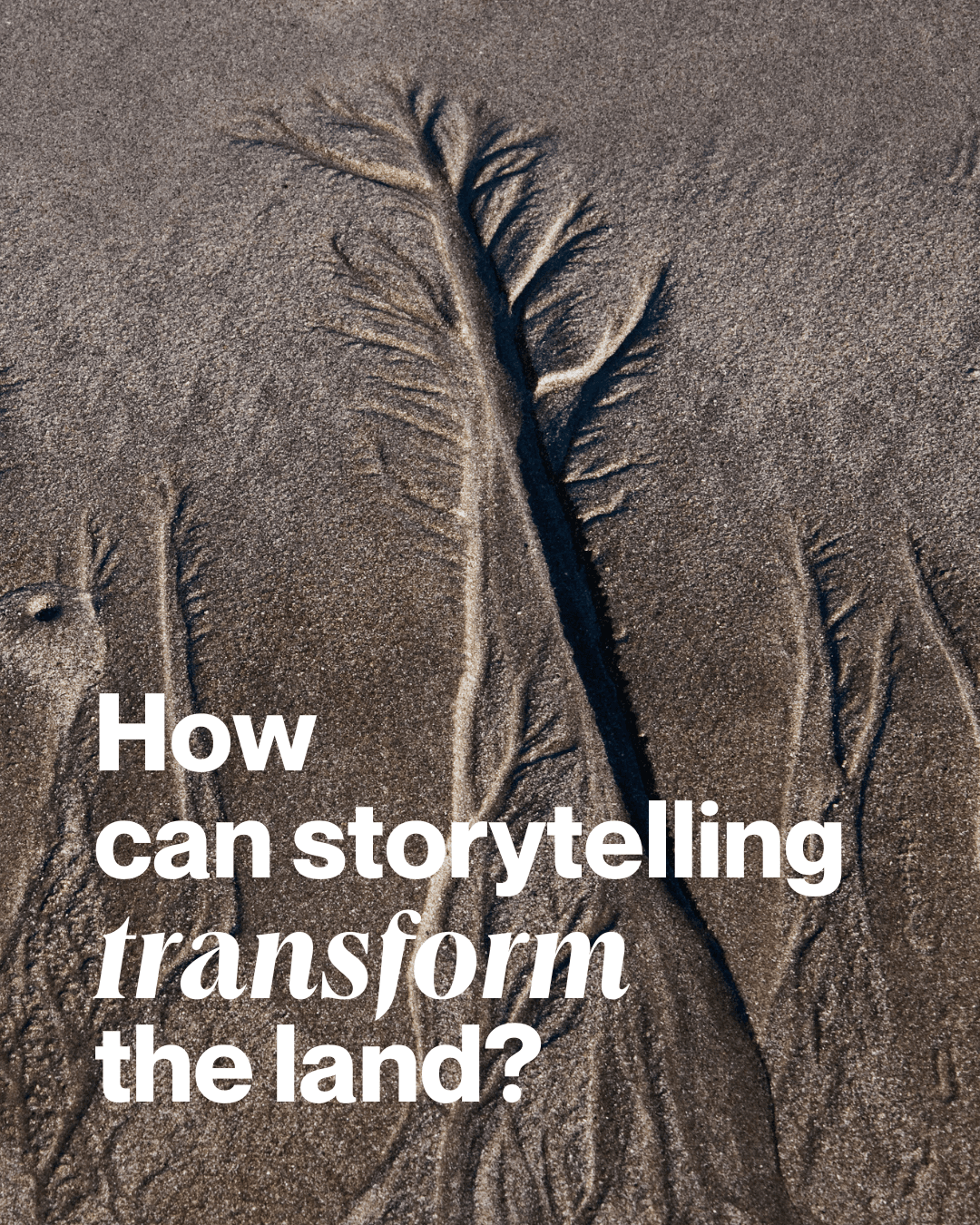Typology
Article
Scopes
Economy
By understanding the account of the site, we identify the natural and social patterns that define a territory, opening the way for the creation of adaptive solutions that regenerate and resilience local social and ecological systems.
Bioregionalization is a fundamental process for understanding the relationship between people and their territories, based on the interconnection between various local systems. This practice is based on the idea that each territory is a dynamic set of layers, such as geology, ecology, biology, culture, economics, mythology and spirituality, which are deeply interrelated. Rather than seeing the territory as a set of resources to exploit, bioregionalization considers that territories are living ecosystems where people, nature and culture connect and transform each other. Through research and account of these multiple layers, the bioregionalization process allows regenerative solutions that respect the natural and social dynamics of a territory.
Working for Capes: A Systemic Approach.
One of the first stages in the bioregionalization process is the search for the layers that make up the territory. These layers include geology, ecology, biology, culture, economics, mythology and spirituality. Each layer is given a fundamental role in understanding not only the material and ecological elements of the territory, but also the way in which the community relates to its environment and natural resources. Geology, for example, allows understanding the physical characteristics of the territory and how these influence the ability to withstand certain productive activities. Ecology studies natural systems and interdependence relationships between species and their habitats, while biology concentrates on the diversity of living organisms and the role of each species within the natural system.
Cultural and spiritual layers are not less important, as the narratives and myths that communities generate on their territories reflect fundamental values that influence decisions on the management of natural resources. As proposed by the Regenesis Group, these traditional practices are not only part of cultural heritage, but often contain deep ecological knowledge that helps maintain balance in territories.
As they work with these layers, they identify the patterns that emerge between them, which reveal dynamics and interactions that are fundamental to understanding how a territory works. These patterns can be observed in natural processes, such as nutrient flows, adaptation of species to climate change or how human communities manage resources. Bioregionalization is a process that seeks to integrate these patterns into concrete and effective solutions for the regeneration of the territory.
The Importance of Working with a Systemic Approach
Working with a systemic approach, as proposed by the Regenesis Group, is essential to create solutions that respect natural and social dynamics. If we only consider one aspect of the territory, such as its geology or economy, we could reach erroneous or ineffective conclusions that negatively affect other parts of the system. For example, an economic development plan that ignores the ecological or cultural conditions of a territory can generate irreparable damage to the local ecosystem or cause the loss of cultural identity for communities. Thus, bioregionalization seeks a deep understanding of the territory through all its layers, to ensure that solutions are truly regenerative.
This integration of the different layers allows working in tune with the dynamics of the territory and ensuring that the proposed solutions are realistic and appropriate for the place in question. When a regenerative strategy is designed from this approach, a model of intergenerational and interconnected collaboration is promoted, where all members of the community work together to address challenges systemically. Thus, an active recovery process of the capabilities of the site is created, and its evolution becomes a constant and dynamic process.
Results of Bioregionalization
The results of applying bioregionalization are diverse, but all are focused on the regeneration of the site as a living and connected system. One of the first benefits is the increased resilience of the territory, since, by identifying and integrating ecological, social and economic patterns, communities are more able to adapt to global changes and challenges, such as climate change, economic crises, and biodiversity loss. In addition, more efficient and adaptive strategies can be created for the management of natural resources, which not only help solve immediate problems, but also ensure the regeneration of the long-term system.
Another result of bioregionalization is the improvement of community relations. When people work together to understand their territory and create regenerative solutions, the sense of belonging and social cohesion is encouraged. This collaborative work for the regeneration of the site creates a solid basis for the development of fairer, equitable and solidarity practices within the community.
Finally, bioregionalization allows to increase the self-management capacity of communities, as understanding the patterns that kingdom their territory through generating their own Relate of the Site, communities can design and apply solutions that allow them to manage their resources more autonomously, without relying so much on external influences. Thus, greater autonomy and empowerment is obtained by the community in its own evolution.
Working towards territorial resilience
By Relating the Site, we identify its layers and observe how these interact with each other, revealing evolutionary patterns that have led to the development of communities and ecosystems. This understanding is fundamental to address current challenges, as well as to imagine possible futures that are desirable and resilient.
Through a transdisciplinary approach, bioregionalization allows us to integrate multiple knowledge to generate local solutions, but also deeply aligned with global needs. Instead of working in isolation, it is proposed to create collaborative networks between communities, institutions, companies and other local entities. These interactions allow us not only to better understand social and ecological dynamics, but also to take advantage of the latent potential of the territory to face global challenges more efficiently and with long-term responses.
Working with the Inherent Potential of the Site
One of the central ideas in bioregionalization is the creation of solutions based on the inherent potential of the site. When we understand the Relate of the Site, we recognize what patterns make up the life of the territory, and this allows us to act consistently with local dynamics. Communities and territories are not static entities, but live and evolutionary systems. The Relate of the Site offers us the tools to identify possible futures based on these patterns and to generate adaptive strategies that prepare the territory for future changes, from global crises to internal transformations that may arise.
This latent potential hidden in the site is revealed when we look beyond external solutions and look for natural and social patterns that have allowed the survival and evolution of communities. The ability of a community to regenerate is closely related to the deep knowledge of the site, as this account allows us to identify the conditions, alliances and natural and social resources that have been built over time and have allowed balance within the ecosystem.
Crisis as Moments of Opportunity
A fundamental aspect of bioregionalization is the ability to see crises as moments for evolution. Crises should not only be seen as moments of fragility, but as stress points that, when understood correctly, can become catalysts for change. This is done through local collective intelligence, which is able to observe crises from multiple perspectives and generate deeper and holistic solutions. Bioregionalization teaches us to identify these stress points, whether economic, social or ecological, and to take advantage of them to transform them into regeneration opportunities.
Practices observed in contemporary bioregionalism show that, when performed locally with a deep understanding of territorial dynamics, global challenges such as climate change, loss of biodiversity or economic crises can be addressed in an adaptive and integrated way, opening the door to innovative and deeply rooted solutions on the site.
Adaptive and collaborative solutions design
Local co-creation processes are essential in this approach. Instead of imposing outside solutions, it works from the specific needs of the territory to create transversal and integrative strategies. Creating land labs, active collaboration spaces between various agents, creativity and innovation in the design of regenerative solutions is encouraged. This work not only allows changes to be adapted, but also takes advantage of social, economic and natural resources to build regenerative and adaptive solutions.
These co-creation spaces not only generate solutions for the immediate crisis, but also help communities visualize possible futures and prepare them so that solutions are enduring. This dynamic process of design and adaptation creates territories that are able to evolve over time and have the ability to regenerate through the natural and social dynamics that define them.

Conclusion
What future do we want to tell?
Bioregionalization is key to building resilient territories, activating the inherent potential of the site through a deep understanding of its interconnected layers: geology, ecology, biology, culture, economics and mythology. This transdisciplinary approach allows us to identify patterns and how they interact, revealing opportunities for regeneration and adaptation to global challenges.
Understanding the account of the site, that is, the deep history and dynamics of the territory, allows us to identify possible future. Observation of the interrelationships between natural and social elements leads us to more adaptive and regenerative strategies, helping to face challenges such as climate change and biodiversity loss.
Crisis are not seen as fragilities, but as opportunities for transformation. The account of the site identifies points of tension and balance that allow to create deep and adaptive solutions. As proposed by the Regenesis Group, these solutions are proactive, aimed at regenerating the territory actively.
In addition, this process encourages cultural change in communities, creating a sense of belonging and shared responsibility. Communities become active agents of regeneration, preparing to face future changes with long-term strategies.
This application of bioregionalization increases territorial resilience, allowing the territory to regenerate through its own dynamics. The more we understand the interrelationships of the site, the more capacity we have to face global and local challenges, creating long-term solutions and helping communities to thrive.
In short, bioregionalization is a process of identifying active patterns and regeneration, which allows us to take advantage of the inherent potential of sites. This not only helps to face immediate challenges, but also opens the way to a more adaptive and resilient future. Crisis become opportunities for evolution and prosperity.

